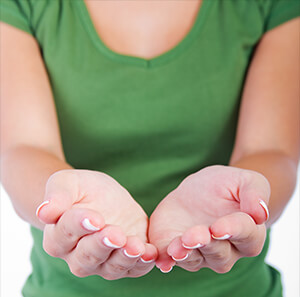Our bodies are equipped with a large number of sweat glands. The glands are situated deep in the dermis layer of the skin or in hypodermis and consists of a base rolled into a ball and a duct carrying the sweat to the skin surface.

The eccrine sweat glands are the most important ones for the regulation of body temperature, by efficiently helping to eliminate excess heat. In total there are several million eccrine sweat glands spread out across the body, with the highest density in palms and soles. In those specific places they help to create friction and get a better grip. While the sweat glands across the body are mainly controlled by hypothalamus, a specific almond sized part of the brain, the sweat glands in palms and soles are controlled mainly by the sympathetic nervous system. This system is also called “fight and flight” and it regulates stress. Sweat from eccrine sweat glands consists mostly of water, but also contains traces of salts, ammonia, lactic acid and urea.

The apocrine sweat glands are mostly located in the armpits and groin region. Contrary to sweaty palms, the apocrine sweat tend to result in the typical acrid sweat odor. This type of sweat contains i.a. albumin and when it is consumed by bacteria on the skin the degradation products cause the undesirable smell of sweat.
There is also a hybrid form of sweat glands, in addition to eccrine and apocrine, called apoecrine glands. Just like the eccrine sweat glands these glands produce ample amounts of sweat, consisting mostly of water and saline.
Both the apocrine and the apoecrine sweat glands are triggered by sex hormones, which is why problems with excessive underarm sweat often stars during the teenage years.
